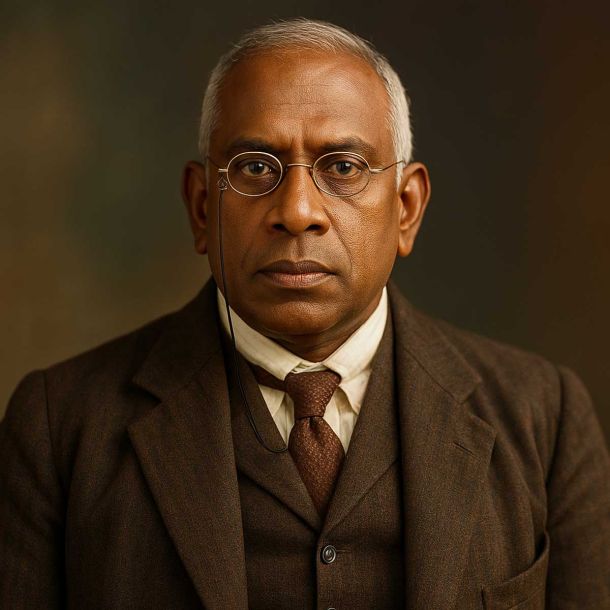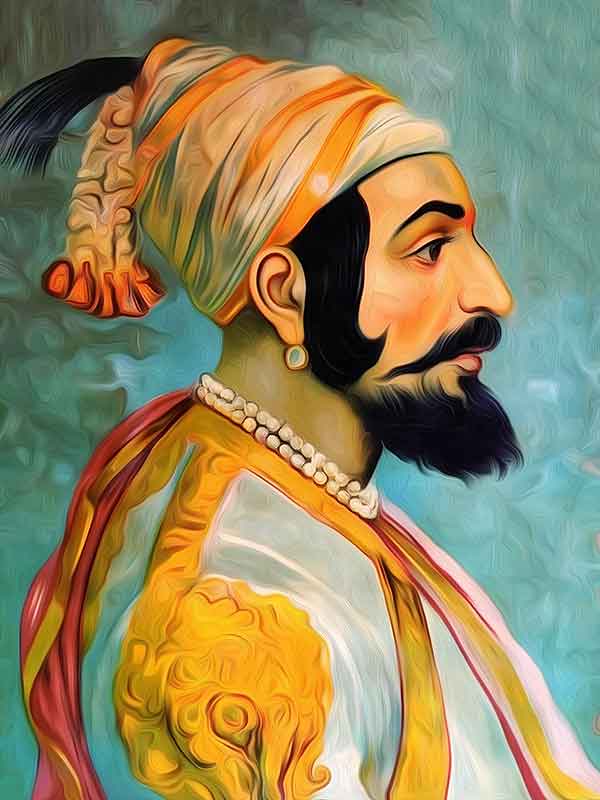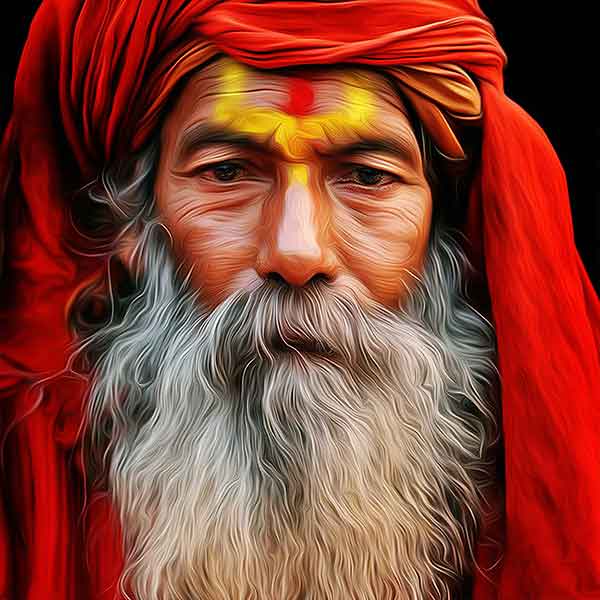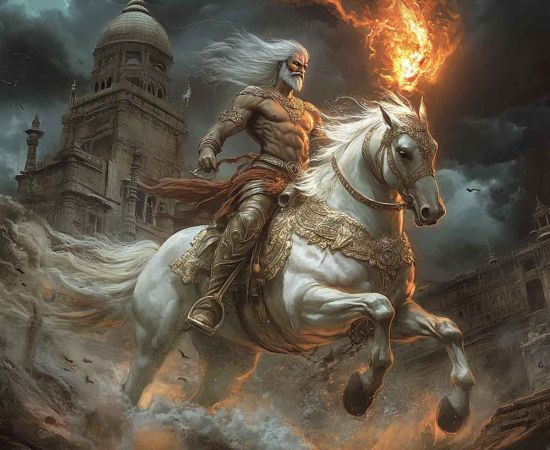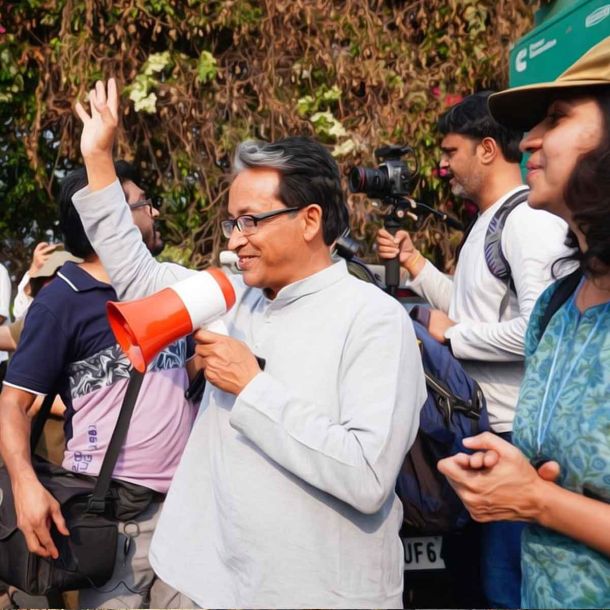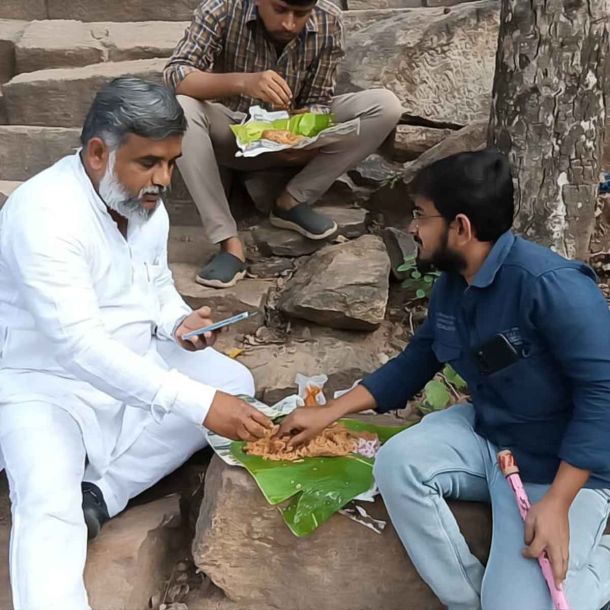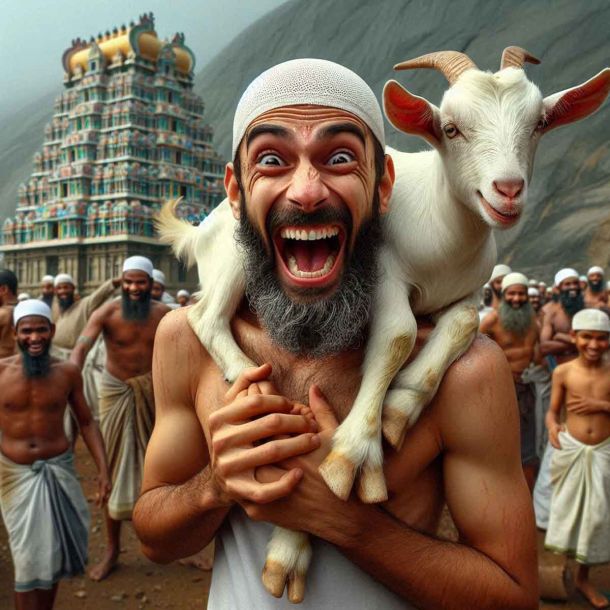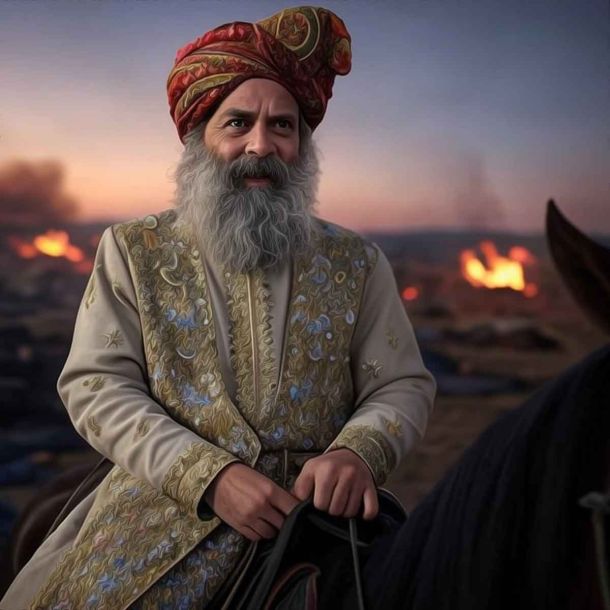MORE COVERAGE
Twitter Coverage
Satyaagrah
Written on
Satyaagrah
Written on
Satyaagrah
Written on
Satyaagrah
Written on
Satyaagrah
Written on
JOIN SATYAAGRAH SOCIAL MEDIA
"आख़िर क्यूँ": Why should Hindus honour tyrant Salar Masud Ghazi who came to kill & convert, when his fake shrine in Prayagraj sparked Islamist outrage over saffron flags reclaiming a space long hijacked by those glorifying Hindu-hating invaders as saints
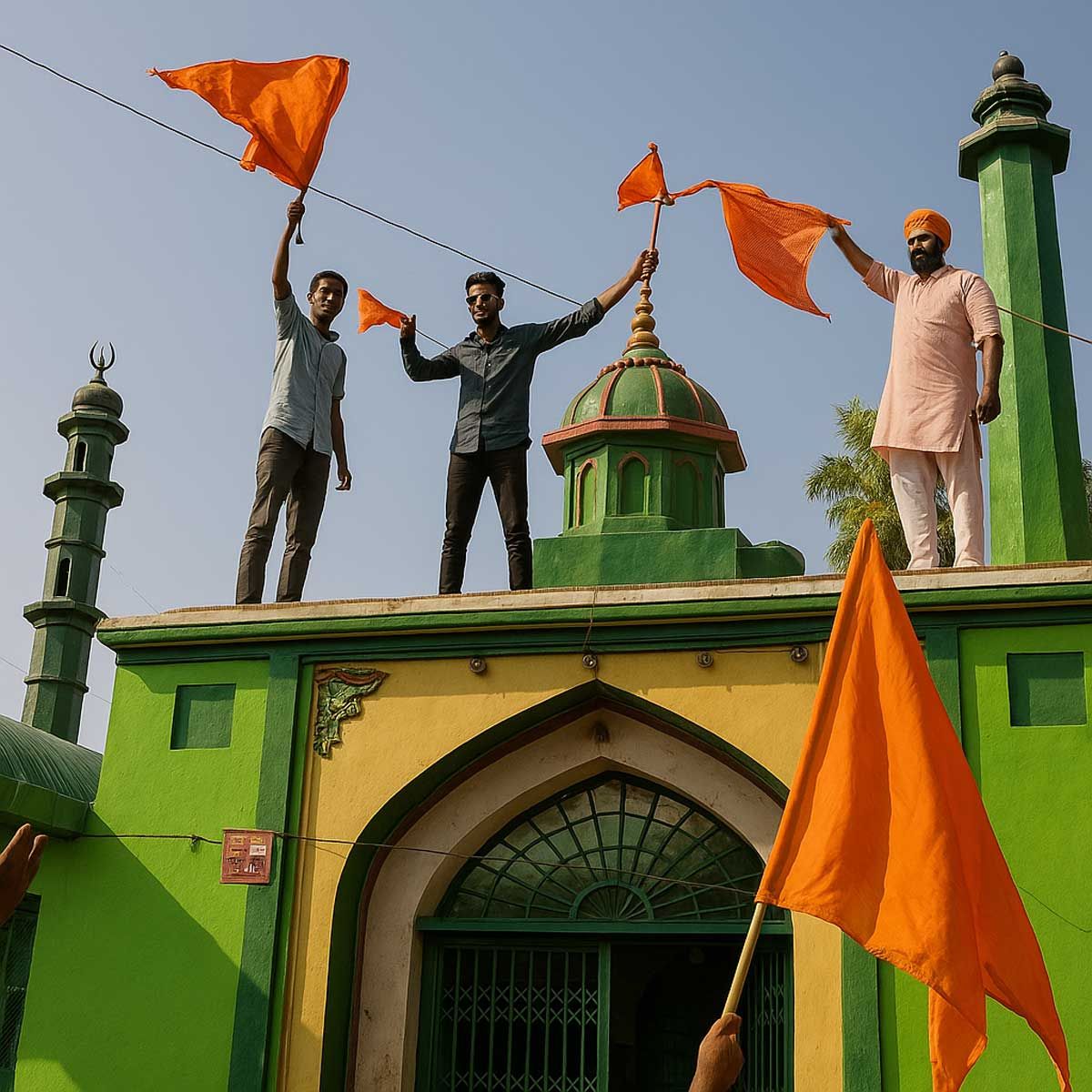
In a country where historical wounds run deep and memories of invasion and destruction are still alive in public consciousness, some radical groups continue to glorify Islamic invaders who, by all accounts, came to India not as saints, but as marauding aggressors. The glorification of such figures—tyrants like Aurangzeb and Tipu Sultan—is not just academic revisionism; it’s an affront to the millions of Hindus who trace their ancestry to the victims of these very invasions.
Their elevation to heroic status, especially by Islamists in India who have a penchant for glorifying historical figures who mirror their own religious fanaticism, reveals more than just ignorance—it reflects a disturbing celebration of religious conquest and oppression.
This twisted admiration reached a disturbing crescendo recently in Nagpur, Maharashtra, where Islamists unleashed violence against Hindus who wanted a discontinuation of honouring the historical tormentor of their ancestors. The audacity of such aggression, aimed at suppressing legitimate Hindu dissent against figures like Aurangzeb, exposes the thinly veiled intolerance of this ecosystem. And it hasn’t stopped there.
Now, the same fanaticism has reached the holy soil of Prayagraj in Uttar Pradesh, where Hindus have come under criticism for expressing religious pride during Ram Navami on 6th April. On this auspicious day, some of the activists of Maharaja Suheldev Samman Suraksha Manch (MSSSM), led by one Manendra Pratap Singh, reportedly climbed atop the Dargah of Syed Salar Masud Ghazi and waved saffron flags in the Baharia area of Prayagraj.
|
To understand the full context, it is important to know who Syed Salar Masud Ghazi was. Also known as Ghazi Miyan, he was the nephew of Mahmud Ghaznavi, the same Ghaznavi who is infamous for destroying the Somnath Temple in 1026 AD, one of the darkest chapters in Indian temple history. Salar Masud came to India during the same period of Islamic invasions and was later mythologized through folklore and shrines, mostly in Uttar Pradesh. Though his original dargah lies in Baharaich, over the years, multiple other shrines in his name have appeared in cities like Bhadohi, Muzaffarangar, and of course, Prayagraj.
Videos of the Ram Navami incident quickly surfaced online, capturing a moment that some celebrated and others condemned. Several videos of Hindu activists waving saffron flags on Salar Masud’s dargah have surfaced online. In the viral video, three men carrying saffron flags are seen reaching the dome, while several others gathered below raise slogans like Jai Shri Ram. The visuals are stark: a crowd resonating with spiritual slogans, showing no signs of violence but immense pride. When local authorities reached the site after receiving information, the police team arrived at the spot, however, the Hindu activists had already gone by then. The Prayagraj Police have since launched an investigation into the matter.
Meanwhile, a formal statement by the MSSSM followed. In no unclear terms, a statement issued on MSSSM’s letterpad pointed out that the Salar Masud’s dargah in Prayagraj is illegal and demanded that the weekly fair held there should be stopped. Manendra Pratap Singh, known for his earlier association with the Karni Sena, went a step further by demanding demolition: he stressed that there should be no place for the dargah of foreign Islamic invaders and demanded that the shrine in question be demolished. His words reflect the simmering resentment among sections of the Hindu community who view these dargahs not as places of peace, but as symbols of conquest.
It's also relevant to note that similar fairs are organised in other shrines dedicated to Salar Masud, leading to consistent tensions. In fact, just last month, the Sambhal Police denied permission for organising the Neja fair to commemorate the Islamic tyrant, showing that the state machinery is not blind to the sensitivities surrounding these commemorations.
Finally, this is not a lone voice crying in the wilderness. The activists of ‘Suheldev Samman Suraksha Manch’ have given a memorandum to the DM and SP regarding their demands, asserting their right to protect historical truth and demand action against what they see as illegal encroachments masking as religious sites.
For more context on Salar Masud’s controversial legacy, The Hindu’s archive on medieval Islamic incursions in India and D.N. Jha’s work on Indian historiography offer critical insights into how such figures are remembered today.
|
Islamists Fume Over Hindus Refusing to Accept the Sanctity of Hindu-Hating Muslim Tyrant’s ‘Dargah’
The sight of Hindu activists climbing up onto Syed Salar Masud Ghazi’s dargah has set off a firestorm, just as you’d expect. Islamists and their so-called “liberal” supporters are up in arms, doing what they always do—pointing fingers at Hindus and brushing off the deep-seated hatred Islamists have toward them. It’s a familiar pattern: whenever Hindus stand up, they’re painted as the bad guys, while the ugly history tied to figures like Salar Masud gets swept under the rug. The outrage is loud, and it’s coming from all the usual corners, with social media lighting up as the battle lines get drawn.
One of the loudest voices in this uproar is Mohammad Zubair from Alt News. This guy’s made a name for himself in some pretty shady ways—like stirring up trouble for ex-BJP spokesperson Nupur Sharma by tipping off Islamists, or trying to pass off “Pakistan Zindabad” slogans shouted by his fellow believers as “Nasir Sahab Zindabad.” This time, he got his hands on some videos showing Hindu activists climbing Salar Masud’s shrine and shared them online. In his X post, Zubair couldn’t hide his frustration, moaning that the administration won’t do a thing to stop these Hindu activists or punish them for what they did. It’s the kind of complaint that’s meant to rile people up, and he knows exactly how to play that game.
|
Then there’s Abhinav Pandey, who works as the Associate Editor at The Lallantop. He jumped into the fray too, posting a picture of the incident on X. Alongside the photo, he wrote, “What religion do these people want to establish? Photo- Prayagraj under Bahria police station… sorry, our city was not like this.” You can feel the disappointment dripping from his words, like he’s mourning some lost version of Prayagraj that he thinks was peaceful and pure before this happened. It’s a jab at the Hindu activists, suggesting they’re out to force their beliefs on everyone and ruin what the city used to be. The picture he shared—of those saffron flags waving high—only adds fuel to the fire for those already upset.
|
Another voice piping up is Zakir Ali Tyagi, a guy known for twisting stories to make Muslims look like victims. He didn’t hold back either, crying out that Hindus are done putting up with anything tied to Islamic invaders. He posted a long rant on X, saying, “The mob involved in the Ram Navami procession in Allahabad’s Bahria police station area not only raised slogans to provoke the Muslims, but also climbed the Dargah of Salar Masood Ghazi and waved saffron flags while raising slogans of Jai Shri Ram. The name of the goon leading the flag-waving group is Mahendra Pratap, who is a BJP worker. Recently, the UP CM was saying in an interview that Muslims should learn discipline from Hindus. Sorry CM sahab, Muslims do not need such discipline at all. Rather, you need to learn from the discipline of Muslims and hand over the videos of the religious programs of Muslims to your people to show how they celebrate their festivals peacefully without harassing or provoking anyone!” His words are sharp, aimed at both the activists and the Uttar Pradesh Chief Minister, accusing Hindus of stirring trouble while claiming Muslims are the ones who know how to keep the peace.
|
Not to be outdone, someone cut from the same cloth—Wasim Akram Tyagi—joined in too. He shared that now-famous picture of Hindu activists standing on top of the dargah with their saffron flags and wrote, “Learn discipline from these Hindus who consider creating a ruckus in the places of worship of others under the protection of the government as their religion?” It’s a sarcastic dig, mocking the idea that Hindus are disciplined when they’re climbing shrines and waving flags, all while hinting that they’ve got the government backing them up. Meanwhile, Rana Ayyub took things even further. She claimed outright that Salar Masud’s ‘dargah’ is actually a mosque, which muddies the waters even more and ramps up the anger.
|
Here’s the thing, though—it’s worth clearing up a key detail. The structure those Hindu activists climbed on in the viral videos, the one they waved saffron flags from, isn’t a mosque at all. It’s a shrine named after Salar Masud Ghazi, but it’s not even his grave or a proper mazar. That’s an important fact that keeps getting lost in all the shouting. Still, you won’t catch the outraged Islamists mentioning it. They’re too busy acting like this was some random attack on a Muslim holy place.
|
What’s really striking is how none of these upset Islamists bothered to tell the full story about who Salar Masud Ghazi even was. They’re leaving people in the dark, letting them think Hindu “hardliners” are just picking fights with Muslims for no reason during their festivals, all to embarrass them. It’s a clever trick—skip the history and make it look like Hindus are the ones causing trouble out of nowhere. But since the Islamists and their leftist pals are so set on making Hindus the villains and covering up the anti-Hindu past tied to Syed Salar Masud Ghazi, it’s high time to dig into the truth. This guy was the nephew of Mahmud of Ghazi, and his story is full of deeds that hit Hindus hard. Knowing that is the only way to see through the noise and understand what’s really going on here.
Ghazi Syed Salar Masud and His Legacy of Killings, Conversion of Hindus to Islam, and Destruction of Hindu Temples
Ghazi Syed Salar Masud was no ordinary man—he was the nephew of the ruthless invader Mahmud of Ghaznavi, a name that still sends shivers down the spine for many. This guy wasn’t someone to admire or honor with flowers and quiet respect. He was an Islamic fanatic and a notorious raider who deserves to be called out for what he did, not celebrated. Islamists, though, sing a different tune, painting him as a “martyr” who gave his life battling the “kafirs.” But let’s get the facts straight: Salar Masud was a cruel man who loved nothing more than slaughtering Hindus, a habit he picked up from his uncle, Mahmud of Ghaznavi. Back in the 11th century, he went on a rampage, forcing Hindus to convert to Islam or face execution. Along the way, he smashed and looted Hindu temples and holy places, like the sacred Suraj Kund at Bahraich, tearing through India until a brave king named Raja Suheldev finally put an end to his terror.
The end came for Ghazi Salar Masud when he clashed with Maharaja Suheldev in a massive showdown called the Battle of Bahraich in 1034 CE. This wasn’t just any fight—it happened near Chittaura Lake, close to what’s now Bahraich city in Uttar Pradesh. Years earlier, in 1026 CE, a young Salar Masud, just 11 years old, tagged along with his uncle Mahmud of Ghaznavi when they wrecked the famous Somnath Temple. That was his first taste of destruction, and it stuck with him. After Mahmud died, Salar Masud took charge and invaded India again in May 1031 CE, bringing a huge army of 100,000 soldiers. He’d learned all the brutal ways of his uncle—fanaticism and barbarism were in his blood by then.
|
His first big fight was against Raja Mahipal Tomar of Delhi, and Salar Masud came out on top, beating him soundly. From there, he marched into the upper Doab region toward Meerut. The king there, Raja Hari Dutt, didn’t even put up a fight—he gave in and converted to Islam. That was just the start. Ghazi Salar Masud kept pushing forward, leaving a trail of invasions, killings, looting, and wrecked temples behind him. He took over places like Multan, Delhi, and Meerut, growing stronger with every step. His army was unstoppable—or so it seemed—marching ahead with no one able to slow him down at first.
As he kept winning, some kings in places like Meerut, Badayun, and Kannauj saw the size of his forces and decided it was smarter to team up with him than try to take him on. Others from different regions made the same choice, joining his side to avoid being crushed. With all these victories under his belt, Salar Masud set his sights on Ayodhya, a city sacred to Hindus. He wanted to conquer it, but to get there, he had to pass through Bahraich, which was part of the Kingdom of Shravasti, ruled by Raja Suheldev. That’s where things started to turn.
Raja Suheldev wasn’t about to let this invader waltz through his land without a fight. When he heard about Salar Masud’s plans, he got to work. He reached out to the kings of nearby states, rallying them together to build a big defense force to stand against the enemy. At first, it didn’t go well—Suheldev’s army took a beating in the early clashes. But he wasn’t the type to give up. He gathered his warriors, fired them up, and told them they had to fight with everything they had. He made it clear: this enemy wasn’t leaving alive if he could help it. The battle stretched on for days, fierce and bloody, until finally, in 1034, Raja Suheldev got the upper hand. He cornered Salar Masud and killed him right there on the battlefield. Word has it that not a single one of Masud’s 1.5 lakh Jihadis made it out alive. That victory didn’t just stop Salar Masud—it slammed the brakes on Islamic invasions into India for almost a hundred years.
The story of Ghazi Syed Salar Masud isn’t one of glory or heroism—it’s a tale of violence and ruin. He left behind a legacy of dead Hindus, shattered temples, and forced conversions, all in the name of his fanatic beliefs. Raja Suheldev’s stand at Bahraich was a turning point, a moment when someone finally said “enough” and fought back. That’s the history Islamists don’t want to talk about when they prop Masud up as some kind of saint. But for those who know what he did, it’s hard to see him as anything but a destroyer who met his match.
|
Islamists Continue to Remember, Extol, and Defend Historical Figures with the Greatest Anti-Hindu Credentials
Islamists, along with their buddies who hide behind the label of ‘secularists,’ have a long track record of praising Muslim historical figures who made life miserable for Hindus. These are the guys who tore down temples, forced people to convert to Islam, and left a trail of destruction—and the worse they were, the more today’s Islamists in India seem to love them. It’s like the more fanatical and cruel the figure was, the higher they lift him up as some kind of hero. Take what happened earlier this year, in March, over in Nagpur, Maharashtra. Islamist mobs went wild, causing chaos in the streets, all because some Hindu activists showed up to protest and demand that the grave of Aurangzeb—a 17th-century Mughal tyrant who despised Hindus—be taken away. The anger was real, and it showed just how deep this admiration runs.
A site called Satyaagrah dug into the details of that mess in Nagpur, laying out how the Islamo-leftist crowd twisted things around to pin the blame on Hindus. They even dragged a film called Chhaava into it, saying it stirred up trouble by showing the awful things Aurangzeb did to Chhatrapati Sambhaji Maharaj. According to them, it wasn’t the Islamists’ fault for getting mad and turning violent—no, it was the Hindus and the movie that somehow forced their hand. Now, we’re seeing the same playbook with Salar Masud’s dargah. The focus stays off his brutal fanaticism, and instead, Hindus get the blame for not quietly going along with the praise heaped on a guy who tortured their ancestors, smashed their temples, and wanted to wipe out Hindu Dharma altogether. It’s a pattern that keeps repeating—shift the spotlight and make Hindus the villains.
|
|
The so-called ‘intellectuals’ in this Islamo-leftist circle have been at it for years, tweaking history books to soften the edges of Muslim tyrants like Aurangzeb and Tipu Sultan. They spin these wild stories to make it seem like those guys weren’t so bad after all. Wouldn’t be a shock if they try the same trick with Syed Salar Masud, cooking up some tale about how he was secretly a good guy at heart, maybe even claiming he had to hurt Hindus for some noble reason. In fact, they’ve already started cleaning up his image. This long-dead Hindu-hater and looter has somehow been turned into a “Sufi saint”—a figure of truth and righteousness. Over at his original dargah in Bahraich, they hold an annual Urs celebration, pulling in folks from Muslim, Hindu, and Sikh communities. People show up to pray and ask for blessings, totally unaware of the bloody past and the awful things Salar Masud Ghazi did to Hindus. It’s like his real story got buried under flowers and songs.
The double standards here are hard to miss, especially from the Islamists and their liberal pals. They’re lightning-fast to call out Hindus for standing up and saying they won’t honor these Islamic fanatics, but they stay dead quiet about the temples that got destroyed or the way these tyrants’ legacies get polished up into nice little stories about “cultural exchanges.” Sure, nobody should be taking the law into their own hands, and that’s not okay—but let’s be clear about what happened in Prayagraj. Those Hindu activists weren’t barging into just any mosque. They were pushing back against the shiny halo stuck on Syed Salar Masud, a man who spent his life tormenting Hindus and smashing their temples with a grin on his face. They weren’t buying into the idea that his dargah deserves respect when it’s tied to someone so vicious.
Whether it’s Aurangzeb, Tipu Sultan, or Syed Salar Masud, the pattern’s the same. This whole ecosystem wants Hindus to stay in the dark, to not notice the brutality and hatred baked into the lives of these figures that today’s Islamists adore. It’s not just about remembering the past—these modern-day fans still carry that same dislike for Hindus and dream of bringing back the kind of chaos their heroes caused. The activists in Prayagraj weren’t out to attack for no reason; they were saying no to glorifying a guy who’d have happily wiped them out. That’s the real fight here, and it’s one the Islamists and their cheerleaders don’t want anyone looking too closely at.
 Support Us
Support Us
Satyagraha was born from the heart of our land, with an undying aim to unveil the true essence of Bharat. It seeks to illuminate the hidden tales of our valiant freedom fighters and the rich chronicles that haven't yet sung their complete melody in the mainstream.
While platforms like NDTV and 'The Wire' effortlessly garner funds under the banner of safeguarding democracy, we at Satyagraha walk a different path. Our strength and resonance come from you. In this journey to weave a stronger Bharat, every little contribution amplifies our voice. Let's come together, contribute as you can, and champion the true spirit of our nation.
 |  |  |
| ICICI Bank of Satyaagrah | Razorpay Bank of Satyaagrah | PayPal Bank of Satyaagrah - For International Payments |
If all above doesn't work, then try the LINK below:
Please share the article on other platforms
DISCLAIMER: The author is solely responsible for the views expressed in this article. The author carries the responsibility for citing and/or licensing of images utilized within the text. The website also frequently uses non-commercial images for representational purposes only in line with the article. We are not responsible for the authenticity of such images. If some images have a copyright issue, we request the person/entity to contact us at satyaagrahindia@gmail.com and we will take the necessary actions to resolve the issue.
Related Articles
- Hinduphobia To Hindumisia: Advancement of Western Academia for Hindu Hatred
- 'We are like vultures, we feed on these moments': Viral Video of Rajdeep Sardesai admitting that Attack on the Indian Parliament was a great day
- Hitler’s propaganda minister Joseph Goebbels said 'Repeat a lie often enough and it becomes the truth' - Whitewashing a genocide – how the exodus of Kashmiri Pandits is being blamed on Hindus instead of on Islamists
- ‘Breast Tax’ to cover their breasts: A False Story to Attack Hindus based on a pseudo-historical legend
- ‘Liberal’ elites has issue with Hindu identity of PM Modi and emphasize "Aakhir Albert Pinto Ko Darr Kyun Lagta Hai" – Deciphering the latest rants of Naseeruddin Shah
- After continuous protests from Hindus, Gurugram administration withdraws its decision to allow Namaz in 8 public places
- To be on the wrong side of history is a choice – How 21st-century invaders are capturing Chhatrapati Shivaji’s forts the way even Mughals didn’t and attempting to reclaim an invader identity unapologetically
- "जय भवानी": Chhaava crosses ₹200 crore, tearing through the distortion of history, unveiling Aurangzeb’s brutality, triggering a tear-jerking meltdown of the Islamo-leftist cabal, and marking a civilizational awakening as Bharat reclaims its truth
- Secular Liberals identify two Muslim areas of a kind: One Muslim dominated area where Hindus ain't allowed, one inside intellectual space where Islamic extremism is whitewashed and any criticism is Islamophobic
- ‘Casteless Hindu’ is Not a Paradox. It is The keystone of ‘Ghar Wapsi’ and Hindutva
- “You are seen and heard, loved and treasured. Your pain is our pain. We are one family”, says Musician Vishal Dadlani to Indian Muslims after Islamists ask for beheading of Nupur Sharma over Prophet Muhammad remarks
- In The Name of National Integration - The Story of Islamic Imperialism in India
- Secularism ideology of India views and appeases Indian Muslims As Pakistanis
- We present a list of trickery, hypocrisy, and biases of the Islamist propagandist Rana Ayyub as she manages to embarrass herself again by infuriating netizens of Saudi Arabia
- MEA spokesperson Arindam Bagchi condemns Somalia-born radical Islamist politician and US Congresswoman Ilhan Omar's visit to PoK, says her ‘narrow-minded politics’ violated India’s territorial integrity, sovereignty

